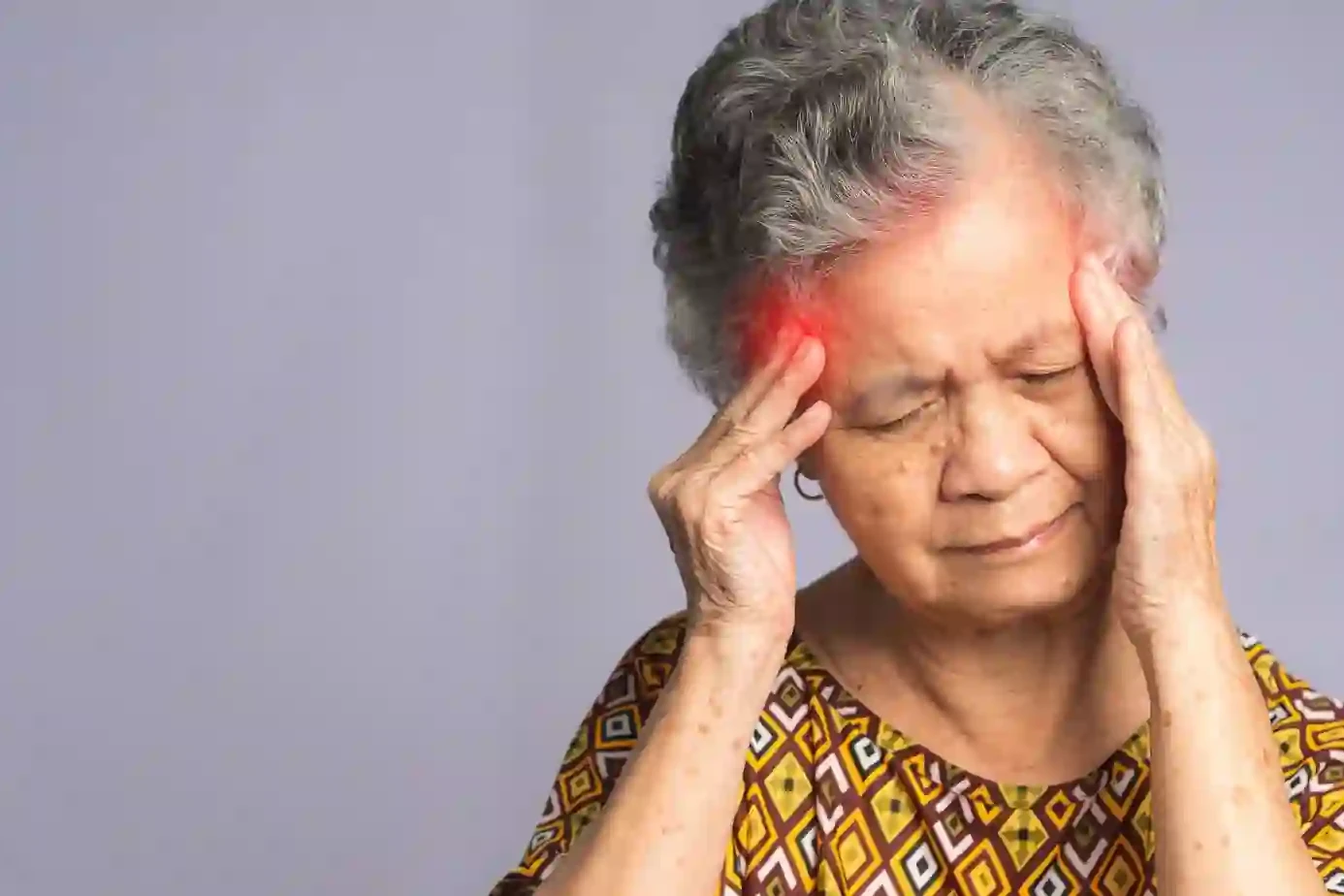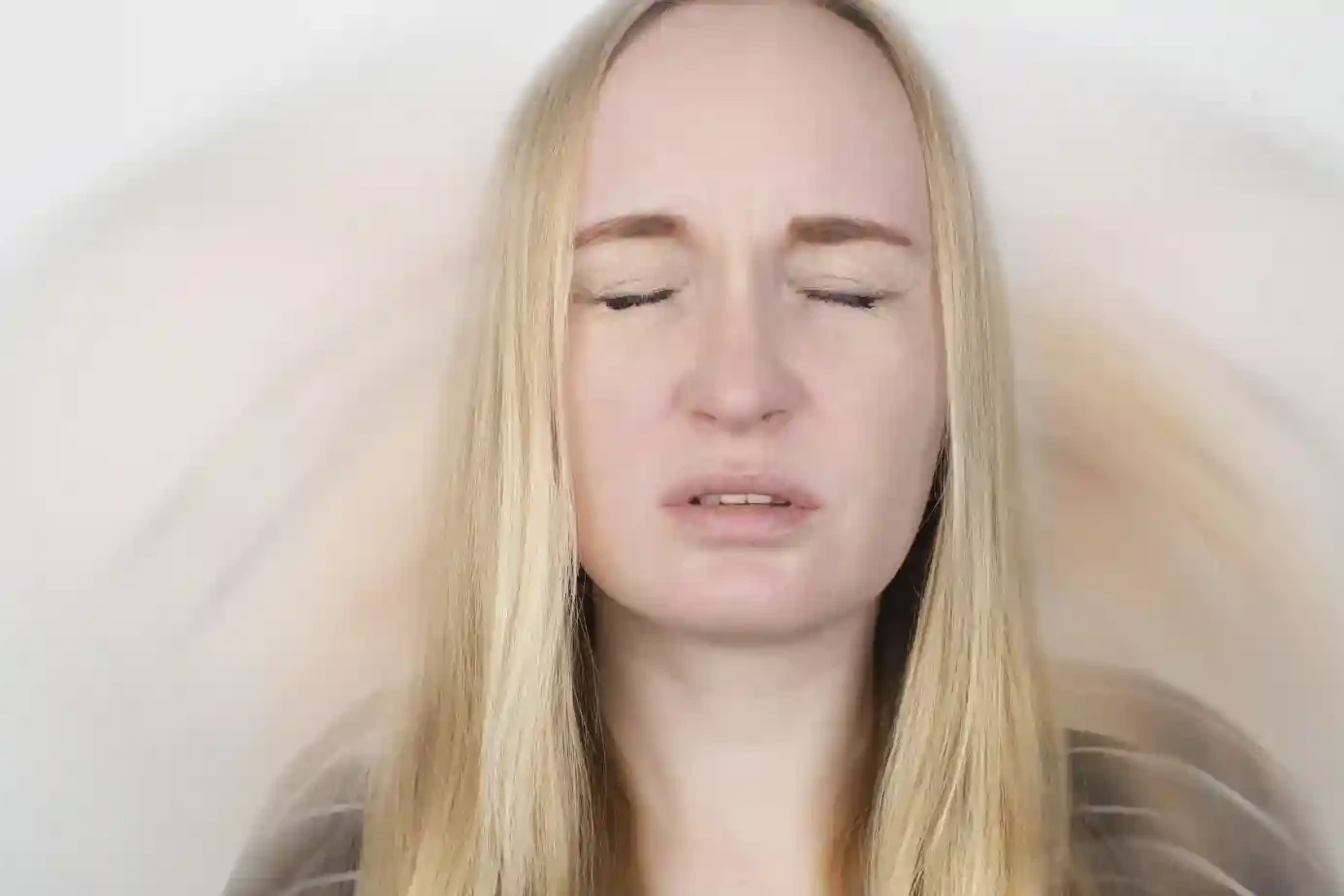Vestibular migraine is one of the most confusing migraine conditions. It does not always bring a headache, yet it can make the world feel like it is spinning. People who live with it often describe days where walking in a straight line feels impossible, or where even simple head movements make them dizzy. Because it mixes migraine biology with balance problems, it is sometimes called Vestibular migraine (VM) or Migraine-associated vertigo (MAV).
This article explains everything you need to know: what it is, how it feels, what vestibular migraine causes are, how doctors diagnose it, and which treatments and lifestyle strategies actually work.
Table of Contents
ToggleOverview
What Is A Vestibular Migraine?

A vestibular migraine is a type of migraine that affects the brain areas responsible for balance and spatial awareness. Instead of only causing headache, it produces dizziness, vertigo, or swaying sensations. Doctors define it as a neurological dizziness linked with migraine activity.
Unlike common migraines, this condition may happen even without head pain. Some patients feel spinning, some feel as if the ground moves under their feet. For others, it feels like being on a rocking boat.
Are Vestibular Migraines Common?
Yes, more common than most people think. Studies show that around 10 percent of migraine patients also experience vestibular features. Many cases go unrecognized, because dizziness is often blamed on inner ear disorders. In specialty clinics, chronic vestibular disorder linked to migraine is a leading cause of unexplained vertigo. Women are affected more than men, and most cases appear in adults aged 20 to 50.
Symptoms And Causes
What Are The Symptoms Of A Vestibular Migraine?

Vestibular migraine symptoms vary, but the hallmark is dizziness or vertigo that lasts minutes to hours. Attacks may come with or without headache.
Common symptoms include:
- Spinning sensation (vertigo) or swaying imbalance
- Difficulty walking straight, especially in crowded spaces
- Nausea / Vomiting linked with dizziness
- Sensitivity to sound / light / odors
- Ear ringing, hearing changes, or pressure
- Temporary blurred vision
- Headache on one or both sides of the head
- Fatigue and brain fog after the attack
Some people also report migraine aura with vertigo, which can include flashing lights or zigzag patterns in their vision.
Vestibular Migraine Symptoms Vs. Vertigo
Not every dizzy spell is a vestibular migraine. Vertigo can arise from ear problems such as Benign paroxysmal positional vertigo (BPPV) or Ménière’s disease.
| Feature | Vestibular Migraine | BPPV | Ménière’s Disease |
| Duration of vertigo | Minutes to hours | Seconds (triggered by head moves) | Hours |
| Headache present | Sometimes | Rare | Rare |
| Ear fullness / hearing loss | Sometimes, temporary | No | Yes, progressive |
| History of migraine | Common | Unrelated | Not always |
This table helps highlight how vestibular migraine symptoms overlap with but also differ from other vertigo causes.
What Causes Vestibular Migraines?
Doctors cannot point to a single cause. Instead, vestibular migraine causes include brainstem activity changes, misfiring of sensory signals, and altered inner ear blood flow.
Researchers believe that a serotonin imbalance affects how the brain processes motion and balance. This explains why dizziness feels so strong. The inner ear and migraine connection also plays a role, as migraine pathways can disturb ear function temporarily.
Vestibular Migraine Triggers And Risk Factors
Attacks often follow certain triggers. The list is long, but common triggers include:
| Triggers | Explanation |
| Stress and lack of sleep | Brain excitability increases |
| Skipped meals or dehydration | Blood sugar and fluid balance drop |
| Hormonal changes (menopause, periods) | Fluctuating estrogen affects brain signaling |
| Barometric pressure / Weather changes | Sudden shifts affect inner ear pressure |
| Certain foods / drinks | Chocolate, wine, aged cheese, processed foods, MSG |
| Childhood migraine history | Many patients had migraine symptoms in childhood |
In short, what causes vestibular migraines varies from person to person. Keeping a diary helps identify personal triggers.
Diagnosis And Tests
How Is A Vestibular Migraine Diagnosed?
Diagnosis is not based on a single test. Instead, doctors use your history and rule out other causes. To confirm vestibular migraine, international criteria require:
- At least five episodes of vestibular symptoms
- Each lasting 5 minutes to 72 hours
- Past or current migraine history
- At least half of episodes linked with migraine features (headache, aura, nausea, light or sound sensitivity)
Tests may include:
- Neurological exam to check balance and reflexes
- Videonystagmography / Electronystagmography to measure eye movements during dizziness
- CT scan or MRI scan to rule out stroke, tumor, or MS
- Hearing loss test to rule out Ménière’s disease
This process ensures other vestibular disorders are not mistaken for migraine.
Management And Treatment
What Is The Treatment For Vestibular Migraines?
There is no one-size-fits-all cure, but vestibular migraine treatment combines lifestyle changes, medications, and rehabilitation therapies. The goal is fewer attacks and better quality of life.
Medications For Vestibular Migraine
Doctors may prescribe preventive or acute medicines:
- Beta-blockers such as propranolol
- Tricyclic antidepressants like amitriptyline
- Calcium channel blockers such as verapamil
- Antiseizure medications like topiramate
- NSAIDs for pain relief during attacks
- Motion-sickness medications (meclizine) to ease vertigo
- Short courses of antipsychotics if symptoms are severe
Vestibular Migraine Treatment For Vertigo
When vertigo dominates, short-acting vestibular suppressants help. But long-term relief often comes from vestibular migraine treatment vertigo strategies like balance training. Patients with daily imbalance may benefit from physical therapy.
Vestibular Rehabilitation Therapy
This therapy retrains the brain to handle conflicting balance signals. Exercises may include head-turning, walking while moving eyes, and stability training. Research shows it reduces dizziness intensity in chronic cases.
Lifestyle Changes And Vestibular Migraine Diet
Lifestyle management is just as important as medication. Patients should:
- Maintain regular sleep patterns
- Stay hydrated and avoid skipping meals
- Limit screen time to reduce eye strain
- Use relaxation methods to lower stress
Food triggers vary, but many find relief on a vestibular migraine diet, avoiding wine, aged cheese, processed meat, and caffeine overload. Some also eliminate artificial sweeteners or food preservatives.
Lifestyle changes for vestibular migraine also include exercise, yoga, and mindfulness practices. A healthy daily routine can dramatically reduce attack frequency.
Outlook / Prognosis
Is Vestibular Migraine Curable?
At present, there is no permanent cure. However, treatment reduces attack frequency and severity for most people. Many regain full function with proper care.
What Can I Expect If I Have Vestibular Migraines?
Living with vestibular migraine can feel unpredictable. Some months are calm, others bring multiple attacks. With steady treatment and trigger avoidance, most patients lead normal, active lives.
The Bottom Line
A vestibular migraine is not “just dizziness” and not “just a headache”. It blends migraine biology with balance symptoms, creating spinning, nausea, and sensory overload. Diagnosis requires careful evaluation.
Vestibular migraine treatment includes medicines, balance therapy, and lifestyle changes like a structured vestibular migraine diet. While not fully curable, the condition can be managed well. Early recognition and treatment allow patients to regain control of their lives.
FAQs
What is the root cause of vestibular migraine?
The root cause is not one factor. Brain signaling changes, serotonin imbalance, and the inner ear and migraine connection combine to produce repeated dizzy episodes.
What does vestibular migraine feel like?
It feels like spinning, rocking, or swaying, often with nausea, sound sensitivity, and imbalance. Some patients experience head pain, while others do not.
What are the 4 stages of vestibular migraine?
The stages include prodrome (early warning signs), aura or dizziness, the main migraine or vertigo attack, and postdrome with fatigue or mild imbalance.
How do you treat vestibular migraines?
Doctors use preventive drugs, acute medicines, vestibular rehabilitation therapy, and lifestyle steps. Combining medical and non-medical care offers the best long-term relief.
Is vestibular migraine a brain disease?
Yes. It is a neurological disorder that affects brain circuits responsible for balance, motion sensitivity, and migraine symptoms.
How serious is a vestibular migraine?
Severity varies. Some people face occasional mild dizziness, while others have disabling frequent episodes. Prompt diagnosis and treatment reduce long-term disability.
What can be mistaken for vestibular migraine?
Conditions such as Ménière’s disease, BPPV, ear infections, and stroke can mimic vestibular migraine symptoms. Careful testing rules out these similar disorders.
About The Author

This article is medically reviewed by Dr. Chandril Chugh, Board-Certified Neurologist, providing expert insights and reliable health information.
Dr. Chandril Chugh is a U.S.-trained neurologist with over a decade of experience. Known for his compassionate care, he specializes in treating neurological conditions such as migraines, epilepsy, and Parkinson’s disease. Dr. Chugh is highly regarded for his patient-centered approach and dedication to providing personalized care.
→ Book a consultation to discover which remedies suit your needs best.






